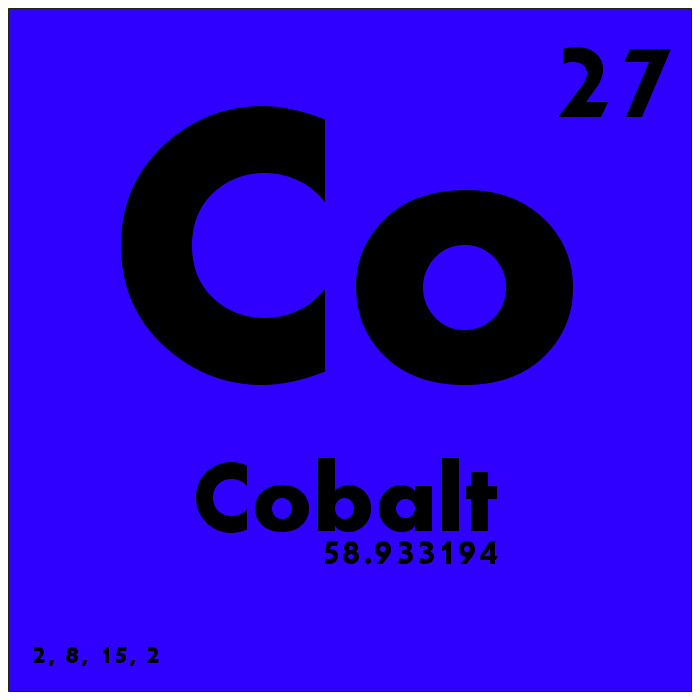
It shares some physical and chemical properties with nickel. It is a silver-grey transition metal that lies to the right of iron, to the left of nickel, and above rhodium in the periodic table. The Element Cobalt in the Periodic TableĬobalt has atomic symbol Co, and atomic number 27. Nearly a third of annually-produced cobalt funnels to the ceramic and paint industries. The term “spin” describes the angular momentum electrons exhibit as they travel around the nucleus.ġ0. In 2010, when German researchers captured the first-ever images of changing “spins” in an atom, they utilized cobalt. The European Union considers cobalt a “critical raw material” because few places exist in which cobalt can be mined in large quantities, and it also has extremely high demand.ĩ. The cobalt isotope Co-60 is key to the production of gamma rays, which can be used to treat cancer and also sterilize medical supplies.Ĩ. The oldest cobalt-colored glass, discovered in Egypt, dates back to nearly 1550 BCE.ħ. Cobalt phosphate can generate a violet color, and cobalt green results from combining cobalt oxides and zinc oxides.Ħ. Cobalt compounds can create many pigments, not just cobalt blue. The scientist responsible, Georg Brandt, became the first recorded metal discoverer in history.ĥ. The element cobalt was the first metal to be discovered that was not an “ancient metal” like copper or gold. Cobalt’s dominant current application is its function in lithium-ion batteries.Ĥ. It comprises the backbone of vitamin B12, which facilitates blood formation and nervous system functioning, among other important things.ģ. Cobalt is an essential component of all living organisms.The toxic vapors turned out to be arsenic, which was commonly found with cobalt.

The element received this name because medieval miners looking for tin thought its ore released toxic vapors when smelted. The term “cobalt” is derived from the German word “kobold,” meaning goblin.
10 Interesting & Fun Facts About Cobaltġ. Even one of its radioactive isotopes, Co-60, has proven key to the irradiation of many food products. Cobalt’s uses are quite diverse, extending to turbine and aircraft engines, the petroleum and chemical industries, and drying agents in paints and inks. It’s an essential trace element in the body, and like iron it can be magnetized. Cobalt appears solid with a silver-white luster and bluish tinge, and it remains brittle at room temperature. This metal occurs naturally in air, water, soil, rocks, plants, and animals. The element cobalt, located in Group 9 on the Periodic Table, falls into the transition metal category.


 0 kommentar(er)
0 kommentar(er)
